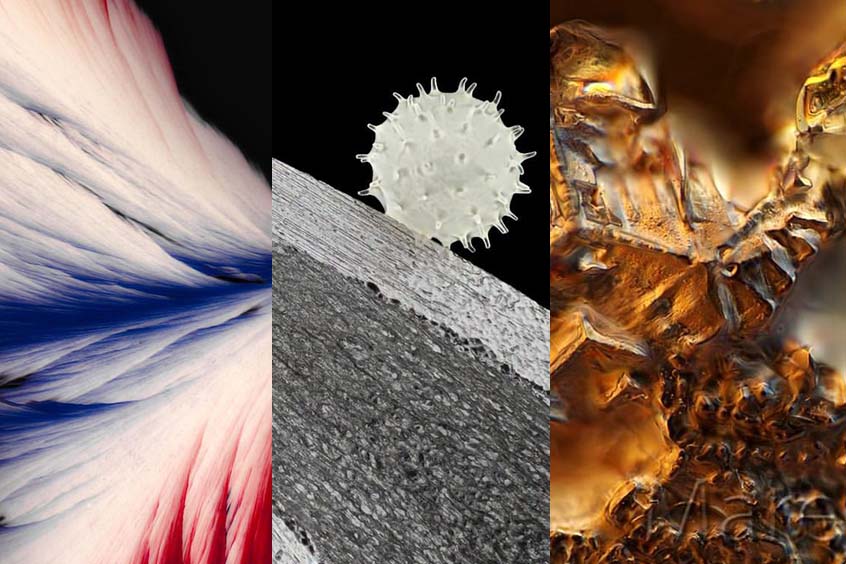Many of the popular microscope images from April look good enough to eat! And some of the imaged samples actually are delicious. From hibiscus to vanilla, we think these images are pretty sweet.
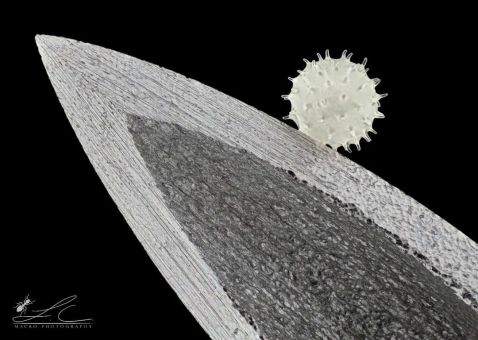
When we think of hibiscus, our minds picture stunning tropical flowers or remember the sweet flavor of hibiscus tea. With the arrival of spring comes an abundance of pollen, and here we see the tiniest bit of hibiscus pollen on the end of a hypodermic needle.
Image courtesy of Leonardo Capradossi. Captured using an Olympus LMPlanFl 20X objective.
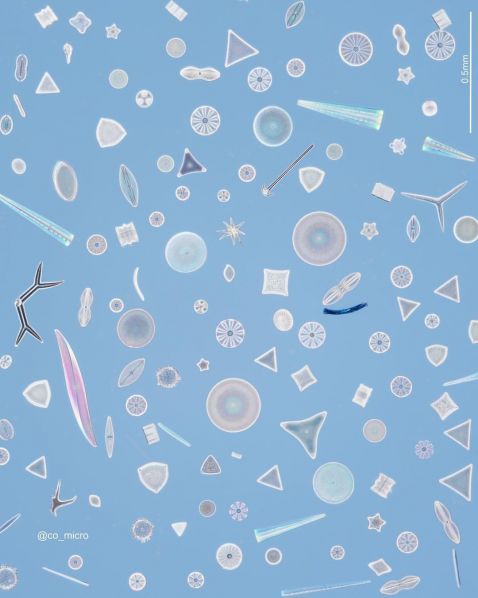
We love diatom slides! So many pretty things to look at in one image.
“This is a stock for making diatom arrangement slides. In addition to diatoms, there are also sponge spicules, radiolarians, and dinoflagellates. This image was taken with the darkfield illuminator positioned lower than usual and without using a filter.”
Image and caption courtesy of @co_micro. Captured using an Olympus BH2 microscope.
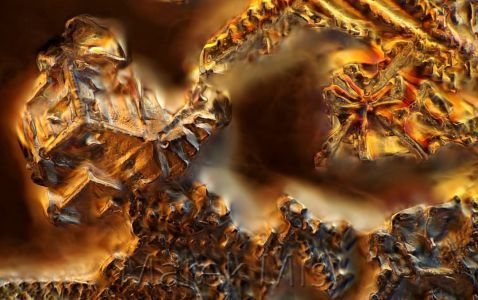
This image of a recrystallized mixture of salt and sugar has us feeling anything but salty! Captured in polarized light, this combination looks like a stunning gold relief painting.
Image courtesy of Marek Miś. Captured using an Olympus BH2 microscope.
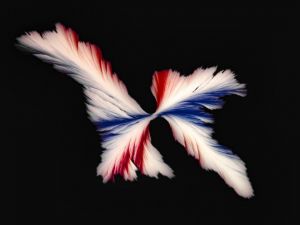

Red, white, and beautiful! This remarkable image shows crystals of Ammonaps.
"Ammonaps, or sodium phenylbutyrate, is used to treat urea cycle disorders. People with urea cycle disorders are missing a gene that helps them get rid of waste nitrogen. Ammonia, which is toxic, is formed from the breakdown of protein in those lacking the enzymes needed. Seen here under polarized light, Ammonaps is not only a helpful medical tool but a beautiful one."
Image and caption courtesy of Håkan Kvarnström. Captured using an Olympus UPLXAPO 4X objective.
Bonus video! This vanilla bean under the microscope is both pretty and delicious.
“Vanilla is a genus that belongs to the Orchidaceae family! Yes, Vanilla is an orchid! I was today years old when I learned this. Orchids are among the largest family of flowering plants and Vanilla contains more than a hundred different species. Vanilla beans used for vanilla extract come from Vanilla planifolia or Vanilla fragrans, which are native to Mexico but are now cultivated in Indonesia, Madagascar, Tahiti, and other tropical countries. The Aztecs used to cultivate vanilla to flavor their foods and drinks. Nowadays, the US is the largest importer of vanilla beans and uses it for the fabrication of vanilla extract.”
Video and caption courtesy of Chloé Savard. Captured using an Olympus BX53 microscope.
To see more images like these, make sure to follow us on Instagram at @olympuslifescience!
Interested in sharing your own images? Visit our image submission site.
Related Content
Colors of Spring—Our Most Popular Microscope Images for March 2023
IOTY Favorites—Our Most Popular Microscope Images for February 2023
All Your Old Favorites―Our Most Popular Microscope Images for January 2023
